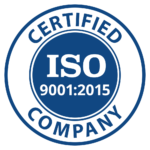Carburizing: Advanced Surface Hardening for Superior Strength and Durability
At SIMIC Manufacturing, we offer carburizing, a heat treatment process that enhances the surface hardness and wear resistance of steels and ferrous alloys, while maintaining the core toughness of components. This treatment is ideal for parts that require a hard surface for wear resistance, while also needing toughness in the inner core for strength and shock resistance.Carburizing is a specialized heat treatment process used to enhance the surface hardness, wear resistance, and fatigue strength of steel and other ferrous alloys, particularly for components that are exposed to high stresses and wear. This process involves the diffusion of carbon into the surface of the material, forming a hardened outer layer (case) while maintaining the toughness of the core. Carburizing is commonly used in automotive, aerospace, and industrial machinery applications where surface durability is crucial.

The Carburizing Process
Carburizing involves heating the component in a carbon-rich environment, allowing the carbon atoms to diffuse into the surface of the material. The general steps are as follows:
Heating: The part is heated to a temperature typically between 900°C and 1000°C, in a furnace where carbon is introduced, either through a gas, liquid, or solid medium.
Carburizing: The carbon atoms penetrate the surface of the material, reacting with the steel to form a hardened case. The depth of the carburized layer depends on the duration of the process and the temperature.
Quenching: After carburizing, the component is rapidly cooled, typically in oil or water, to harden the surface. The rapid cooling locks the carbon into the surface, forming a martensitic structure that increases the material’s hardness.
Tempering: To relieve the internal stresses caused by the quenching process and adjust the hardness of the core, the carburized component is then tempered at a lower temperature (around 150°C to 200°C).
Types of Carburizing
Carburizing can be performed using various methods, each with distinct advantages depending on the application requirements:
Gas Carburizing: The most common form, where the component is exposed to a carbon-rich gas (such as methane or propane) in a controlled furnace atmosphere. This method is ideal for large-scale production and complex geometries.
Pack Carburizing: In this method, the parts are packed in a carbonaceous material (such as charcoal) and heated in a furnace. While it is slower and more labor-intensive than gas carburizing, pack carburizing is often used for smaller batches or when a deep carburized layer is required.
Liquid Carburizing: Involves immersing the part in a molten bath of a carbon-containing liquid. This method allows for uniform carburizing of parts but is less commonly used due to the complexity of maintaining the bath temperature and composition.
Vacuum Carburizing: A newer, more advanced method that uses a vacuum furnace and gas injection to carburize the part. This process is highly controlled and minimizes the risk of oxidation, making it ideal for precision components.
Benefits of Carburizing
Increased Surface Hardness: The carburized surface becomes significantly harder, providing superior wear resistance, which is crucial for components exposed to friction and abrasion.
Enhanced Fatigue Resistance: The carburized layer improves the component’s resistance to fatigue, especially in parts subjected to cyclic loading, reducing the likelihood of cracking or failure.
Improved Durability: Carburized components exhibit higher resistance to erosion, corrosion, and impact, making them suitable for harsh environments.
Core Toughness Retention: While the surface becomes hard, the core remains soft and tough, providing excellent load-bearing capacity and shock resistance.
Applications of Carburized Components
Carburizing is widely used in industries where parts must withstand high stresses, wear, and fatigue. Some common applications include:
- Automotive: Gears, camshafts, crankshafts, axles, and other high-performance components.
- Aerospace: Aircraft engine parts, landing gear components, and high-stress fasteners.
- Industrial Machinery: Bearings, valves, gears, and tool steel used in heavy-duty machinery.
- Oil & Gas: Valve seats, drill bits, and other components exposed to high-pressure and abrasive conditions.
How to Test Carburizing Results
Testing the results of carburizing is essential to ensure the process has achieved the desired surface hardness and case depth while maintaining core toughness. Some common tests include:
Hardness Testing:
- Rockwell Hardness Test (HRC): The surface hardness of the carburized part is measured to ensure that the material has reached the desired hardness level.
- Vickers or Knoop Hardness Tests: These are used for precise hardness measurement, especially for thin carburized layers.
Case Depth Measurement:
- Metallographic Cross-Section: A sample of the carburized part is cut and polished to reveal the depth of the carburized layer. Microscopic examination helps measure the case depth and ensures uniformity.
- Microhardness Profiling: This test measures hardness from the surface to the core, identifying the transition zone between the hardened case and the softer core.
Microstructure Examination:
- Metallographic Analysis: The microstructure is examined to confirm the formation of martensitic or bainitic structures in the carburized layer, while the core should retain its original microstructure (e.g., pearlite or ferrite).
Residual Stress Testing:
- X-Ray Diffraction (XRD): Measures residual stresses induced by the carburizing process, which could affect the component’s performance.
- Strain Gauges: These can be used to detect any unwanted residual stress in the component after carburizing.
Wear Resistance Testing:
- Pin-on-Disk or Ball-on-Flat Tests: These tests assess the wear resistance of the carburized surface by simulating friction and measuring material loss.
Fatigue Testing:
- Rotating Bending or Axial Fatigue Tests: These tests simulate cyclic loading to assess the component’s resistance to fatigue failure under operational conditions.
Contact SIMIC Manufacturing
At SIMIC Manufacturing, we offer high-quality carburizing services tailored to the specific requirements of your parts. Our advanced carburizing process ensures optimal surface hardness, wear resistance, and core toughness for components used in demanding applications. We utilize state-of-the-art equipment and strict quality control procedures to deliver parts that meet the highest standards for durability and performance.
Contact SIMIC Manufacturing today for more information or to request a quote for carburizing services. Let us help you enhance the performance and longevity of your components with our specialized heat treatment solutions!



